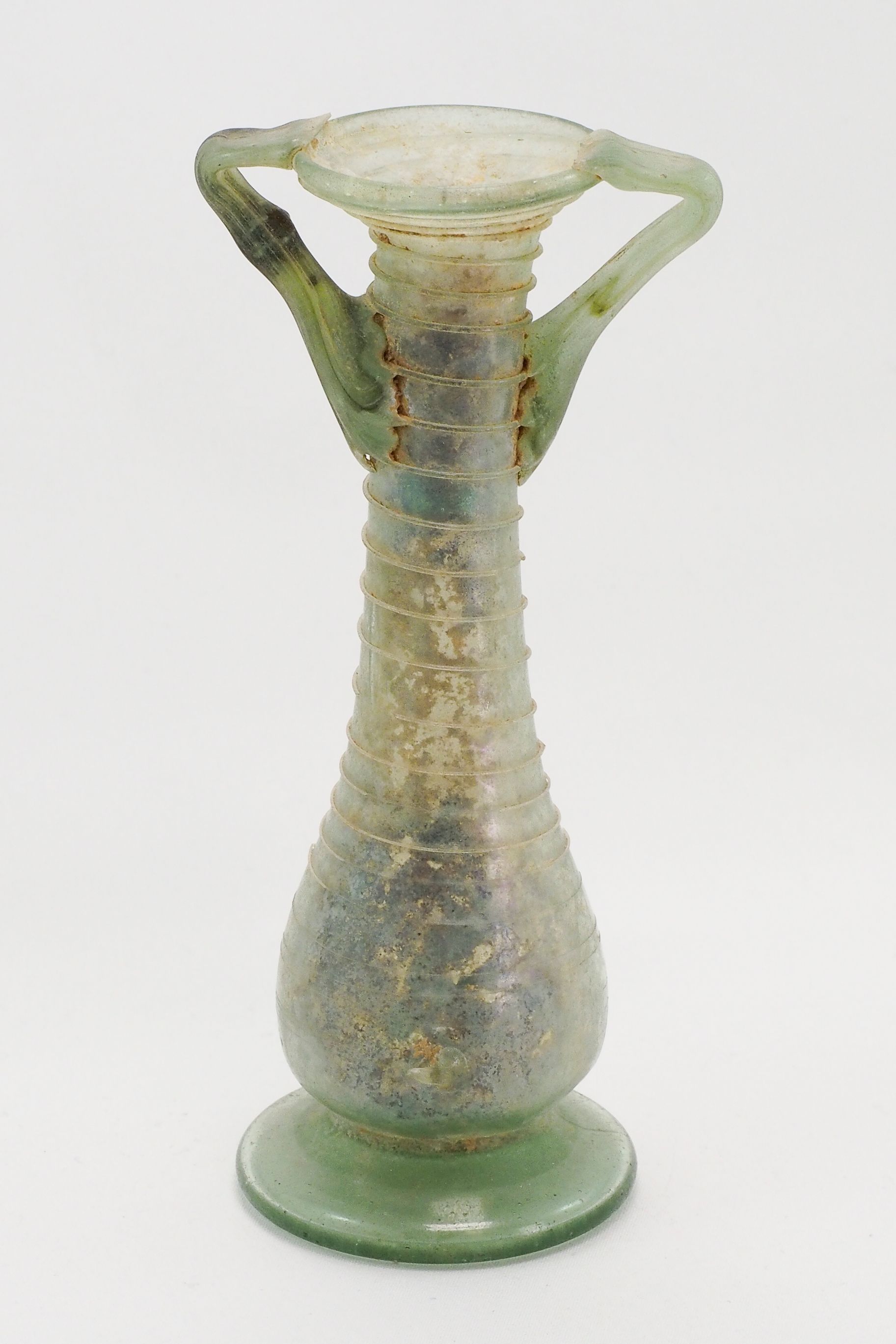Cosmetic Flask
Name/Title
Cosmetic FlaskEntry/Object ID
11NE-Mi28-166Description
The rim is folded inwards and the mouth is funneled. On the cylindrical neck, applied glass was dropped in a "combed" pattern then pulled up and out and then attached to the rim. The excess glass of the handle was cut off at the rim. The cylindrical neck widens at its base creating a bulging body. Along the neck and body are twenty-two trails applied in one continuous spiral; the last five spirals to the base are heavily worn. There is a small piece of rough glass on one side of the lower part of the body. The foot is conical with a folded tubular edge and a pontil mark to the base. The vessel is intact with some iridescence.Use
CosmeticContext
This vessel was likely used as a kohl tube. It would have contained kohl which was most commonly a black cosmetic power made from pulverized lead ore. Another popular kohl pigment in ancient Egypt and the Near East was green, made from malachite ore. Kohl was commonly applied as a powder or paste with a rod applicator; some glass vessels have even been found with their applicator rods made of bronze, glass, or bone. These vessels also would have been sealed by stoppers made of wax or linen. As a cosmetic, kohl was applied by both men and women to the eyebrows, eyelashes, or to outline the eyes, giving a smoky eye appearance. It was not only used for cosmetics but also as a medical salve for eye infections. Kohl is still used in modern times, mostly by cultures in North Africa and the Middle East. The earliest kohl tube first appeared in the third century CE as a singular tube. Cosmetic flasks with tubular bodies, conical feet, and trailed decorations such as this became popular in Syro-Palestinian workshops in the fourth century CE. In the fourth to sixth centuries CE, the cosmetic flasks consist of more than one tube, typically two. Most of the multiple kohl tubes appear with ornate glass trails, applied loops to the side of the body, and ornate basket handles. Throughout the Byzantine period handles became increasingly complex, leading some to appear bulky. However, the handles were likely used to suspend the vessels as many appear without bases.Made/Created
Date made
250 CE - 400 CETime Period
Roman Imperial, Late AntiqueEthnography
Culture/Tribe
Near Eastern - Syro-Palestine

